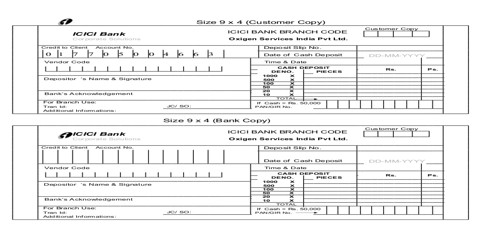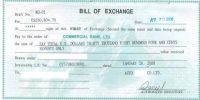Pay-in-slip is an outline presented in banks and is used to deposit money into a bank account. Each pay-in-slip has a counterfoil which is returned to the depositor accordingly sealed and signed by the bank officer. This source document relates to bank transactions. It gives details regarding date, account number, the amount deposited (in cash or cheque), and the name of the account holder.
When an individual needs to deposit checks or cash in his bank account he usually fills out a slip to show the number of his account, the date, and the details of the deposit. Some deposits will consist of checks, and the depositor will list each check with the check number and the whole amount of the deposit.
Pay-in-slip and cheques are both documents related to the bank transaction but are used for different purposes. A payslip is a document that’s given to an employee with each pay. It is a form used to deposit cash and cheques into a bank account. It shows their total wages earned for a set period. It has a counterfoil which is returned to the depositor with the signature of the cashier as a receipt. This might be from a salary, hourly wages, or commission.
Americans call a “pay-in-slip” a “deposit slip.” This is a preprinted form which is the size of a standard check and typically comes in the back of the checkbook. Payslips also list tax withheld and personal deductions made. It has the customer’s name and account number, and customers write down how much money they want to deposit into a checking or savings account. This includes insurance and superannuation contributions. Payslips are also known as ‘pay stubs’, ‘paycheck stubs’, or ‘pay advice’. They detail the exact amount of each physical check they are bringing to the bank and/or the exact amount of cash and coins they are depositing.
Once the deposit is made at the bank, the customer is given a receipt to prove that the deposit has been made into the proper account. Traditionally the payslip was a paper document attached to a physical cheque. This is becoming a less common practice as many people are switching to direct (electronic) deposits. Today, most employers prefer to use electronic payslips.
However, it should be noted that banks, particularly the big ones, are trying to get away from the official procedure and switching over to computer equipment. For example, at some banks, the client can insert his plastic card in the ATM (automated teller machine), knock-in his four-digit PIN number (personal identification number), and deposit cash or checks into the machine without filling out a deposit slip.















